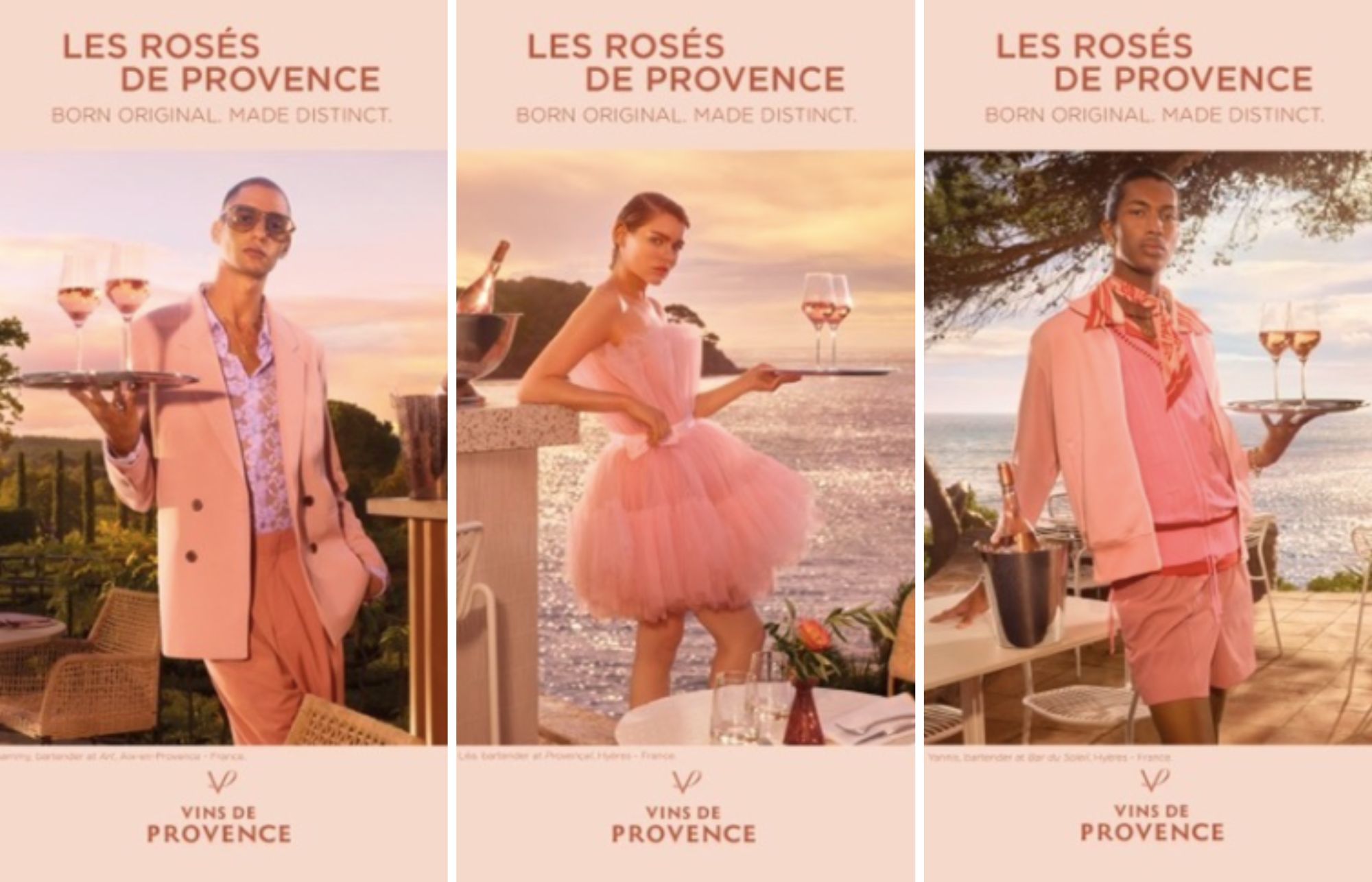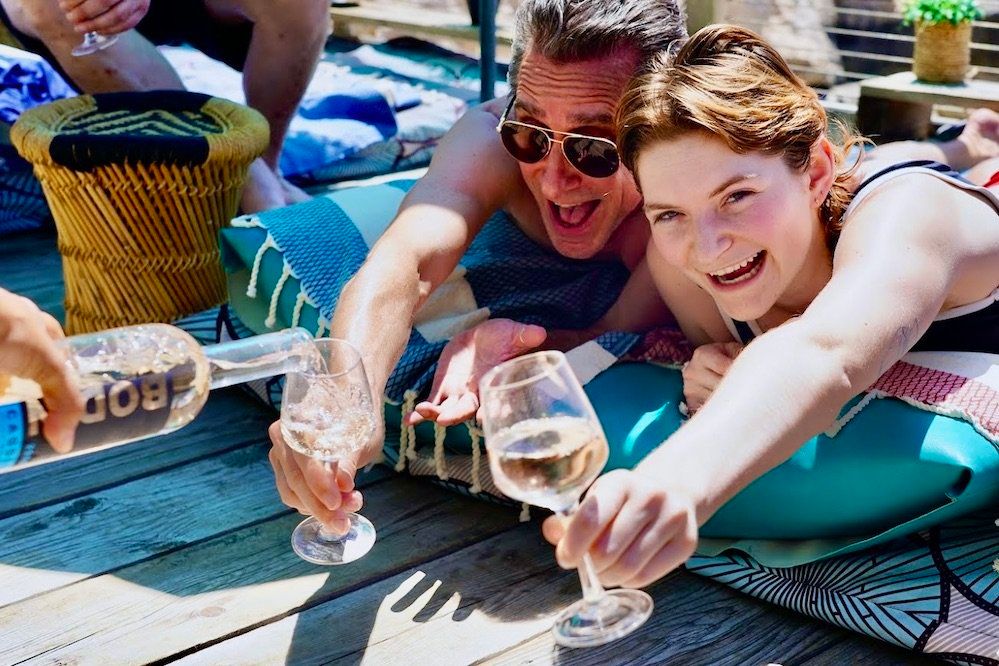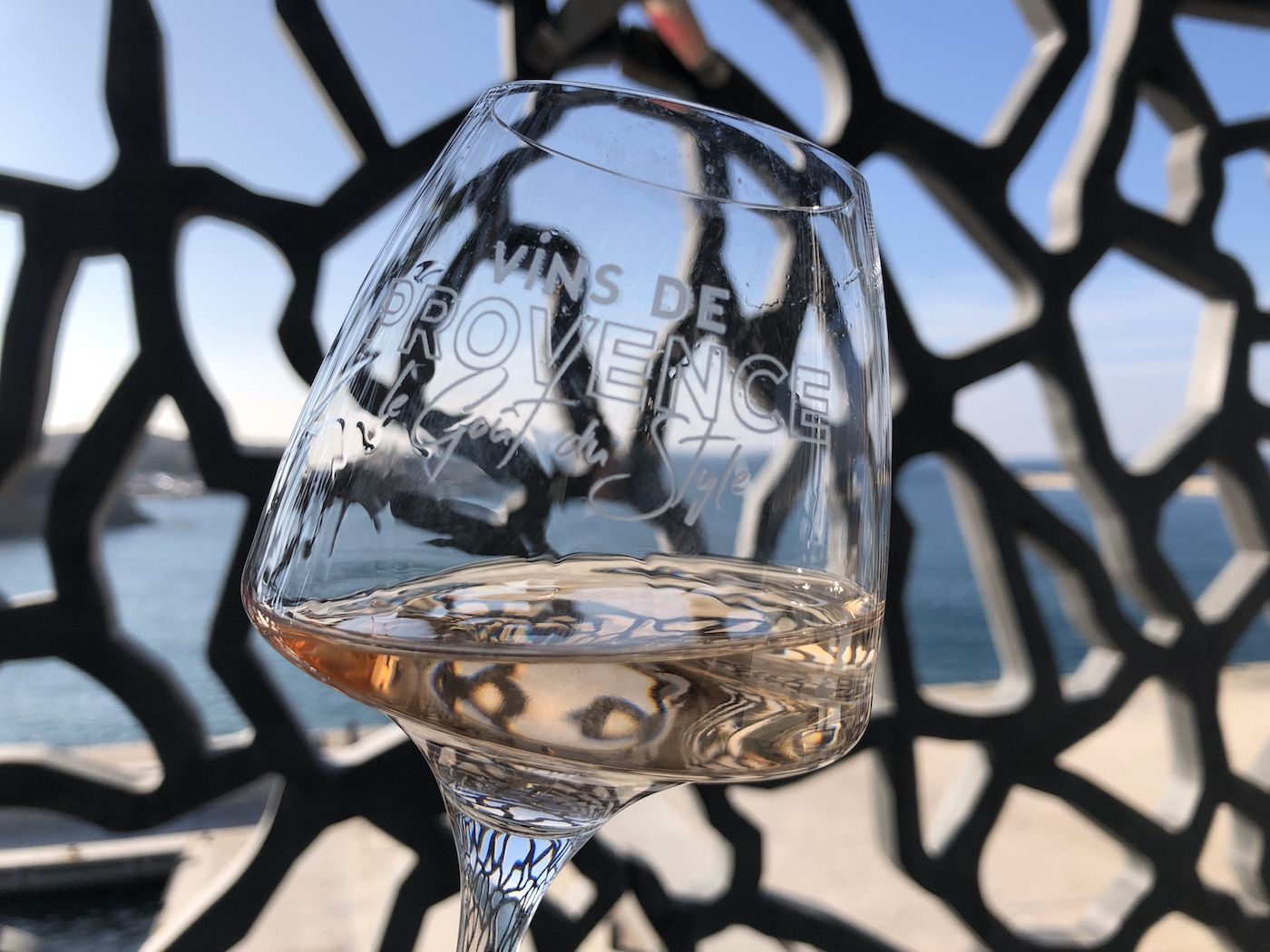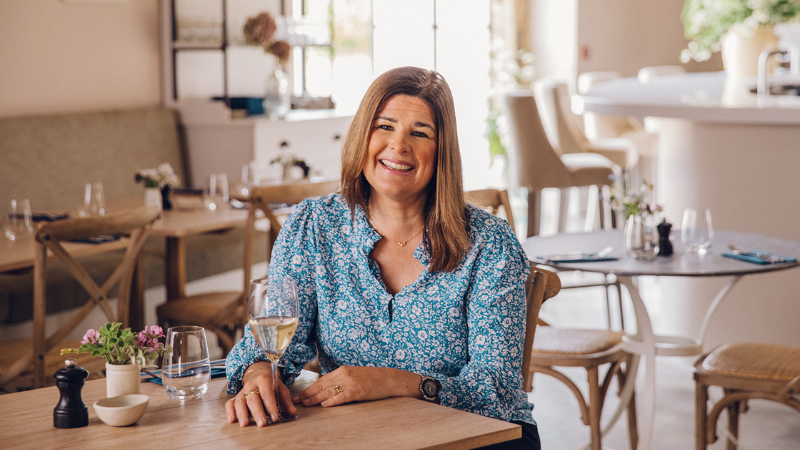The key difference in hosting a restaurant tour rather than having a standard wine tasting, is wine buyers get the chance to taste and assess the wines in the way they were made - to be paired and enjoyed with food and to explore the gastronomic and more aged styles of Provence rosé.
It was also an opportunity for buyers to have their say and benchmark Provence rosé against similar styles from other countries and regions, to determine what unique characteristics apply to Provence and to ask if pale pink rosé is still the preserve of Provence or does it now have credible competitors?
The Restaurant Tour also allows buyers to see wines in a different, more relaxed context than a formal trade tasting. The chance to meet, network and taste alongside your peers in the sector where there might be a few less spittoons than at a formal event.
How
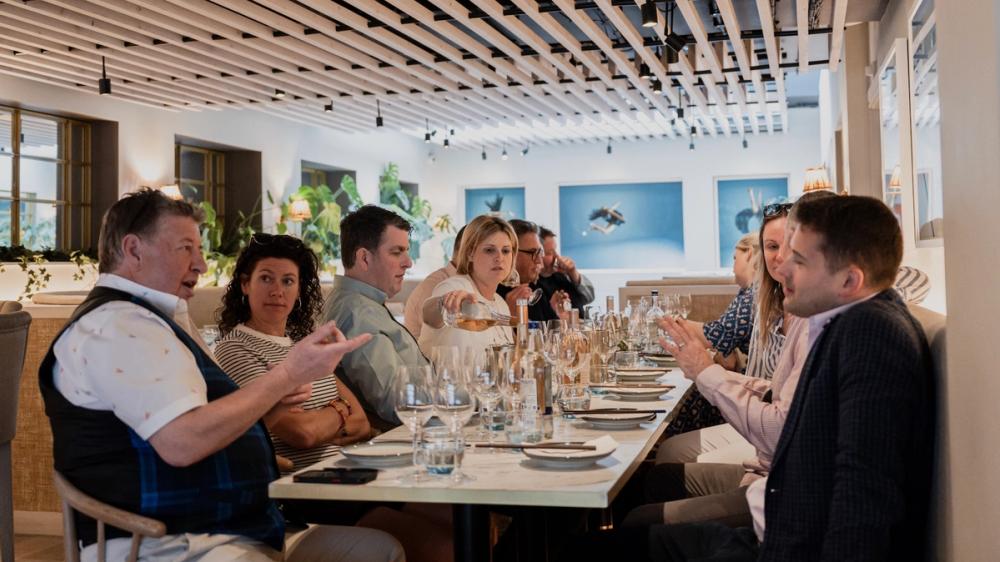
The Provence Rosé Restaurant Tour was a chance for leading wine figures to taste rosé wines against different styles of cuisine
To best showcase how well Provence rosé wines can match and pair up with different styles of cuisine The Buyer and Vins de Provence teamed up with three restaurants serving cuisines you might not normally associate with Provence rosé, venues that could challenge and inspire Provence rosé wines at the same time, offering the chance to see how Provence rosé performs against different ingredients carefully selected from our partner restaurants.
A chance to showcase the quality, expertise, diversity, versatility and gastronomic potential of Provence rosés.
A selection of six wines were chosen for each of the restaurants that took part in the tour. Wines that included cuvées from the 2023 vintage as well as oaked and wines suitable for ageing, which could best illustrate the wines’ gastronomic profiles.
The one caveat being the tour did not involve a typically French restaurant where you might expect to find a good selection of Provence rosé wines. The buyers, therefore, had the chance to taste the wines in the environment to that of their potential wine customers.
The Restaurant Partners
Our thanks go to each of the restaurants and venues that took part in the restaurant tour. They included:
Rabbit
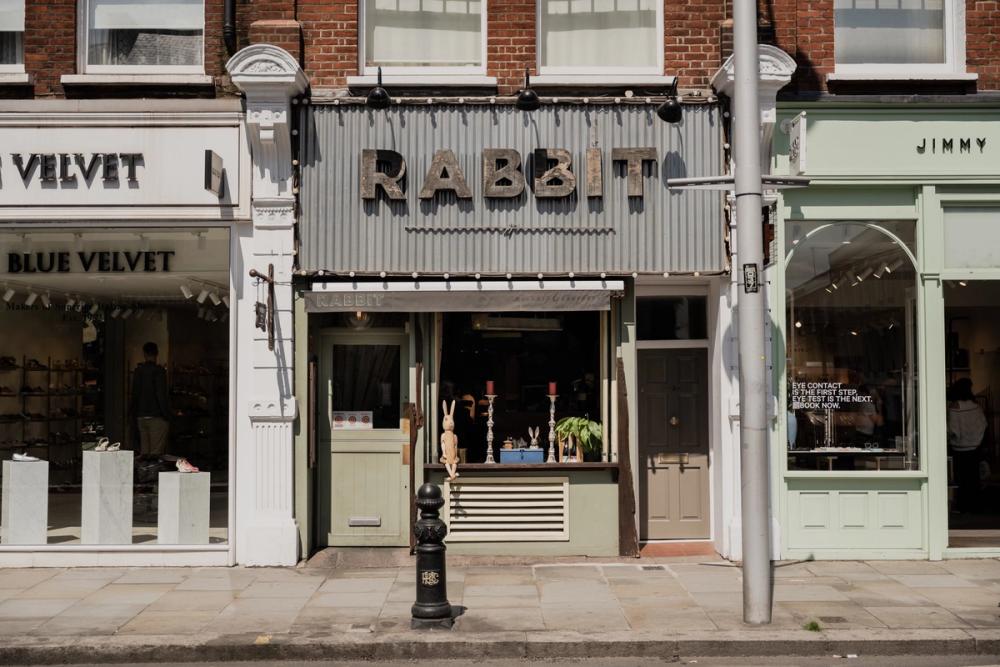
Rabbit prides itself on its locally sourced food to fork English produce menu with many ingredients sourced from its own farm
172 Kings Road Chelsea
London, SW3 4UP
www.rabbit-restaurant.com
Rabbit is a farm-to-fork neighbourhood restaurant focusing on sustainability that looks to capture the English countryside's flavours, freshness, and vibrancy with many of its produce, ingredients and meat coming from its own family farm in West Sussex.
Chicama
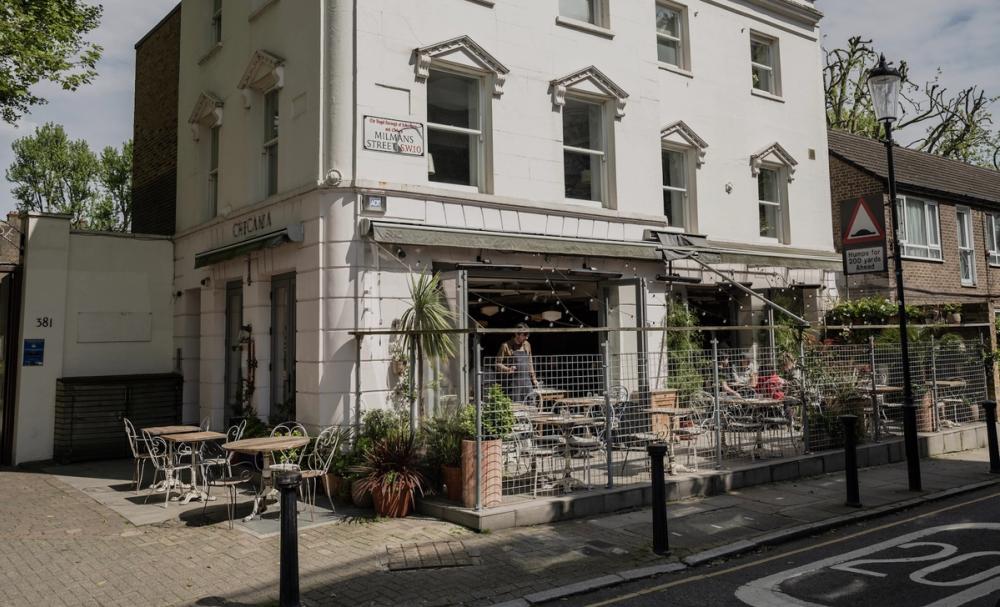
Chicama, just off the Kings Road, specialises in Peruvian cuisine
383 King's Rd, London SW10 0LP
Chicama is part of the Pachamama Group and is centred on exploring the coastal cuisine of Peru and enhancing it through more contemporary techniques and flavours. Its main focus is on seafood, seasonal vegetables and creating Peruvian inspired dishes.
HUŎ
9 Park Walk, London, SW10 0AJ
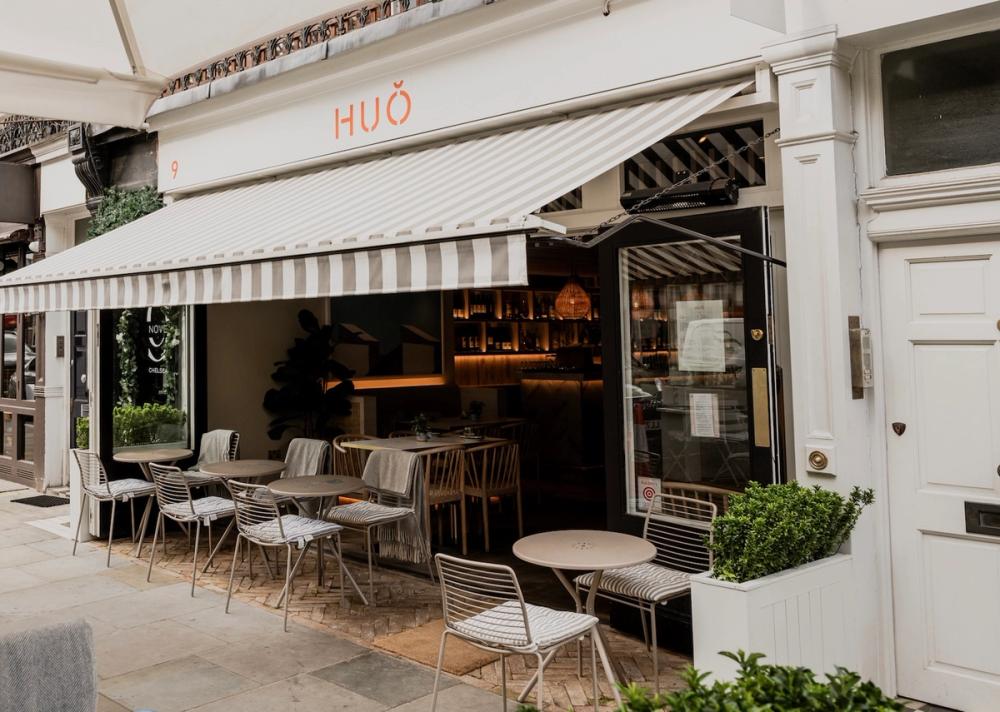
HUŎ offers authentic Chinese food South East Asian food to local in Fulham, London
HUŎ bar & restaurant offers a wide range of clean, fresh and healthy Asian food encompassing carefully selected dishes from around China and Southeast Asia, all prepared from scratch using traditional Chinese, Thai, Malay and Singaporean disciplines.
The Restaurant Tour Panel
The Buyer Provence Rosé Restaurant Tour panel was made up of a wide selection of local wine merchants, regional importers, wine writers and consultants enabling a diverse range of views and feedback on the wines tasted and their potential in the UK wine market. We also worked hard to make sure our panel were the sort of individuals who also did not mind being thrown together and were quickly able to get into the spirit of the day of meeting fellow, interesting peers in the trade. The panel included:
Ray O’Connor MW, wine consultant
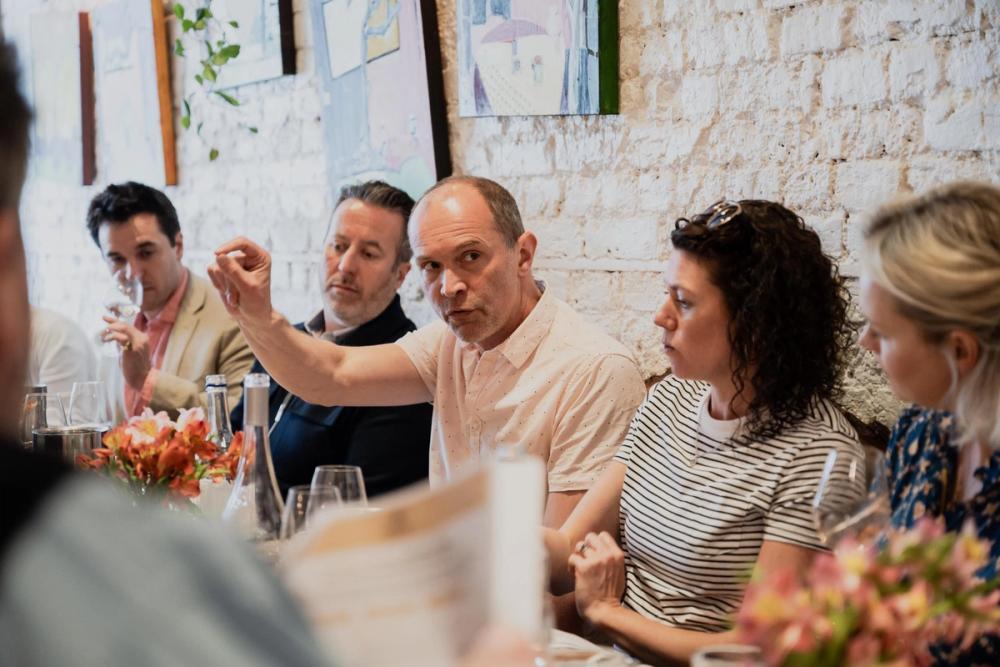
Ray O'Connor MW is an ambassador for Provence rosé wines
Ray O’Connor MW has had a wide wine career working as commercial manager at the International Wine Challenge and then most recently as wine director at Naked Wines. He now runs his own wine consultancy business and is a UK wine ambassador for Vins de Provence helping to tell its story. Connor shared his knowledge throughout the tour, providing insight on Provence wines and the initiatives that have been put in place to ensure Provence’s leadership within the category.
Juliet Doughty: head sommelier, Elystan Street.
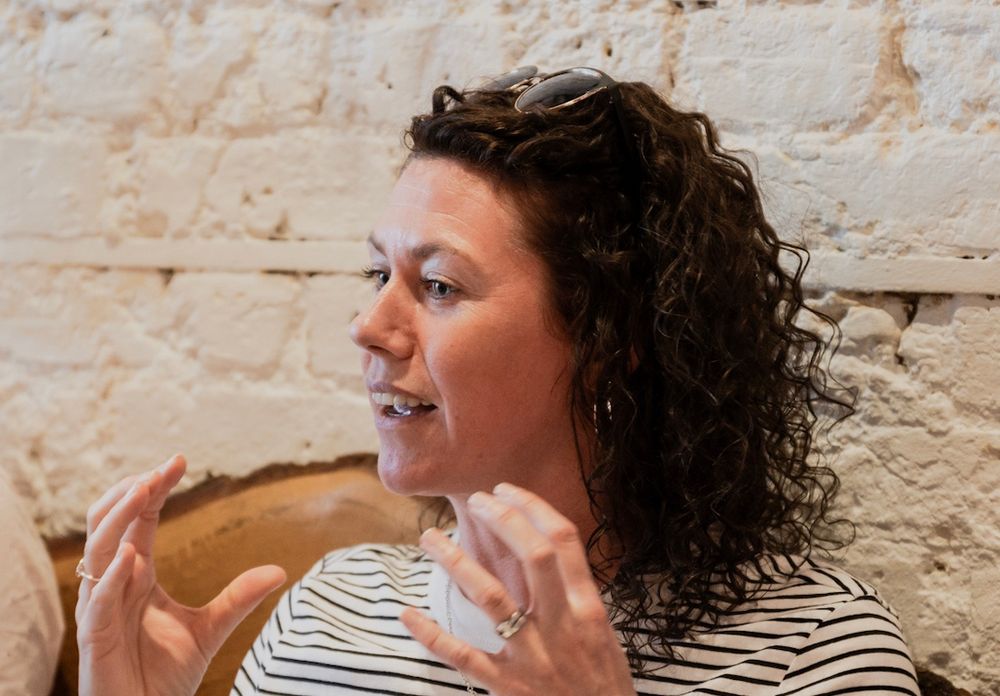
Highly experienced sommelier, Juliet Doughty, has recently returned to the UK from a number for years living in Canada where she worked for a number of well-known restaurants. She is now head sommelier at Michelin chef, Philip Howard,’s Elystan Street, in Chelsea, London and is responsible for managing the wine list and running the wine team. She is due to start work in the sales team for Liberty Wines later in the month.
Ian Wharton: head sommelier, Scott's of Richmond

Canadian Ian Wharton has been living in the UK for the last two years and heads up the sommelier and wine team at Scott’s in Richmond, sister restaurant to Scott’s in Mayfair. He has wide experience as an advanced sommelier and worked for a number of leading Canadian restaurants including Elisa Steakhouse.
Henry Boyes, on-trade sales director, MDCV UK

Henry Boyes has a wide experience working in senior roles both for on-trade operators, such as Mitchells & Butlers, and major suppliers and brand owners, including Enotria, Freixenet Copestick and now as UK on-trade sales director for MDCV UK that is looking to disrupt the English wine sector with its high volume, good quality Charmat wines.
Ben Jackson, communications and PR manager, Hallgarten & Novum Wines

Ben Jackson is a key member of the award-winning Hallgarten & Novum Wines helping to shape its trade and consumer PR and communications. He has also worked in the clothing sector with Diesel, for the Punch Pub Company and hospitality advertising agency, Elliotts. He has been with Hallgarten for nearly eight years.
Abbie Bennington, educator and specialist wine writer
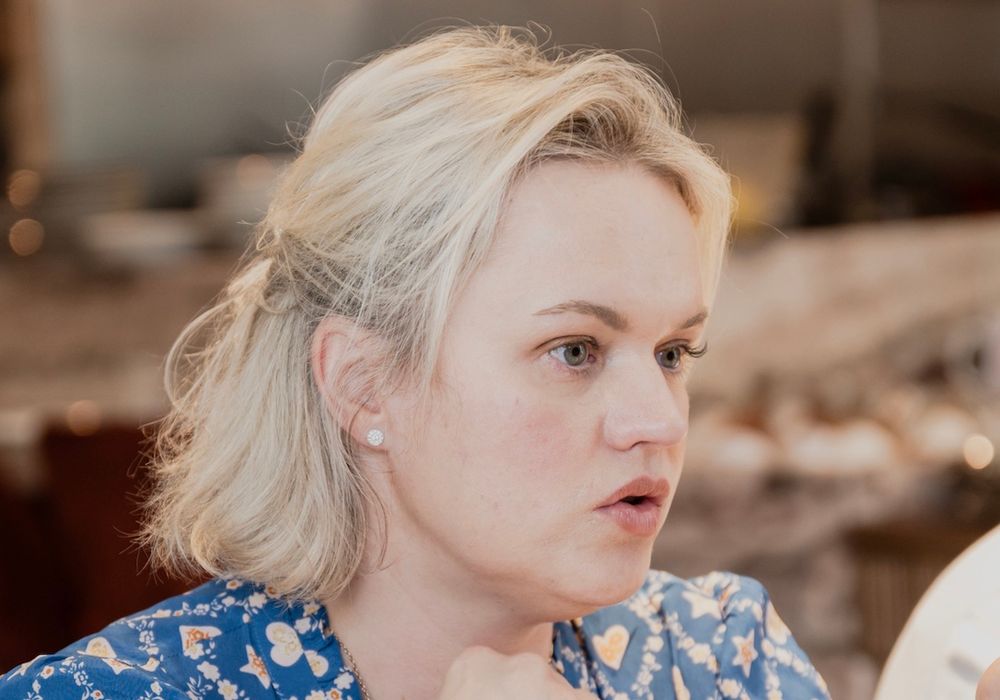
Former BBC news producer Abbie Bennington has successfully changed careers to set up her own wine consulting, judging and WSET training business - www.abvtastings.com - as well as being a regular writer for a growing list of wine publications including being a regular contributor to The Buyer.
Peter Doherty, brand manager, Hallgarten & Novum Wines

Peter Doherty helps manage and promote wine producers and brands across the Hallgarten & Novum Wines group and now specialises in its French division. He has previously held senior roles at Amathus Drinks and RiverLoire Events and was a personal wine adviser at Averys Wine Merchants.
Dan Whine, senior manager for BWS at Zapp

Dan Whine is helping to champion and drive sales of premium wines and spirits across the Zapp on demand delivery app and introduce a new channel for major brands and producers to high net worth individuals in London. He was previously heading up wine buying at Petersham Cellar and Farmdrop.
Joe Wadsack, wine consultant and broadcaster

Former supermarket wine buyer, Joe Wadsack is now of the UK’s most in demand commentators, broadcasters and presenters for wine and spirits at food and drink festivals as well as running his own YouTube show, The Drinks Coach. He is also a senior judge at the International Wine Challenge.
Luke Flunder, specialist influencer, founder of Flunder Wines

Luke Flunder has switched careers from selling wine at Majestic to now helping to promote and publicise producers and wines through Flunder Wines. He is also one of the UK’s fastest growing wine influencers having made his breakthrough on TikTok and now on Instagram. Follow TikTok wine guy @LukeFlunder with over 200k followers.
Richard Leaver, owner of Twin Thieves and co-founder, Savvy Pair.
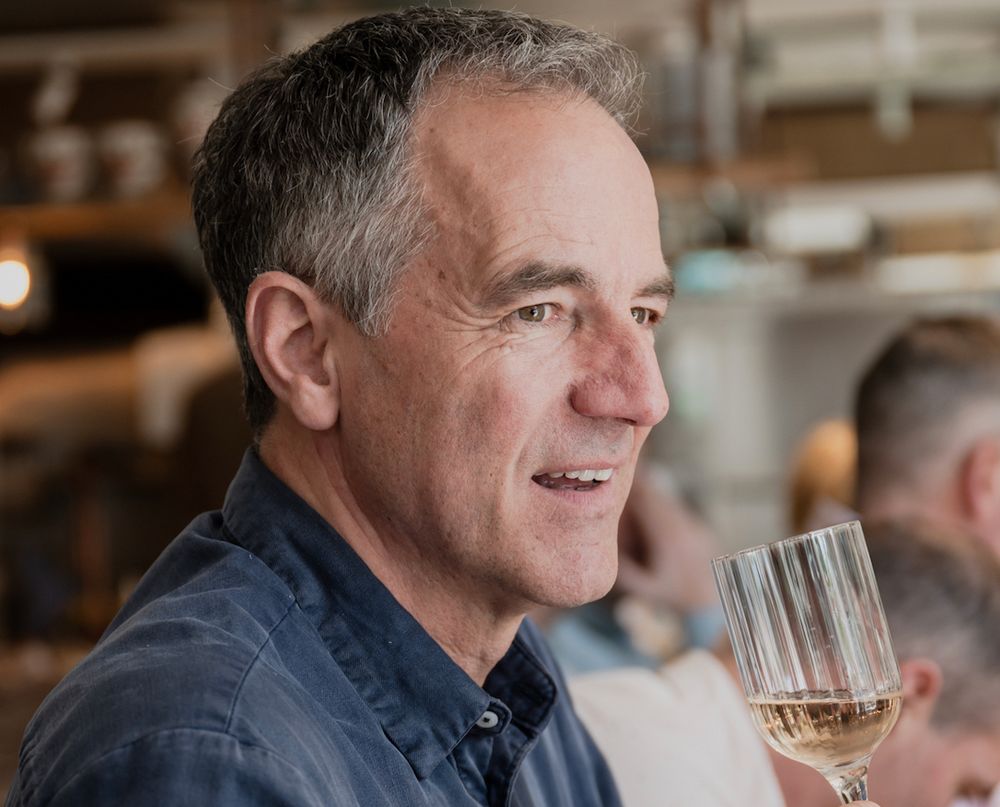
Hugely experienced and respected wine buyer, consultant with a network of producers and contacts around the world. Richard Leaver runs his own Twin Thieves wine consultancy business a new branded partnership Savvy Pair producing and promoting its own wines.
Erin Smith, e-commerce wine consultant and former MD of Slurp Wine
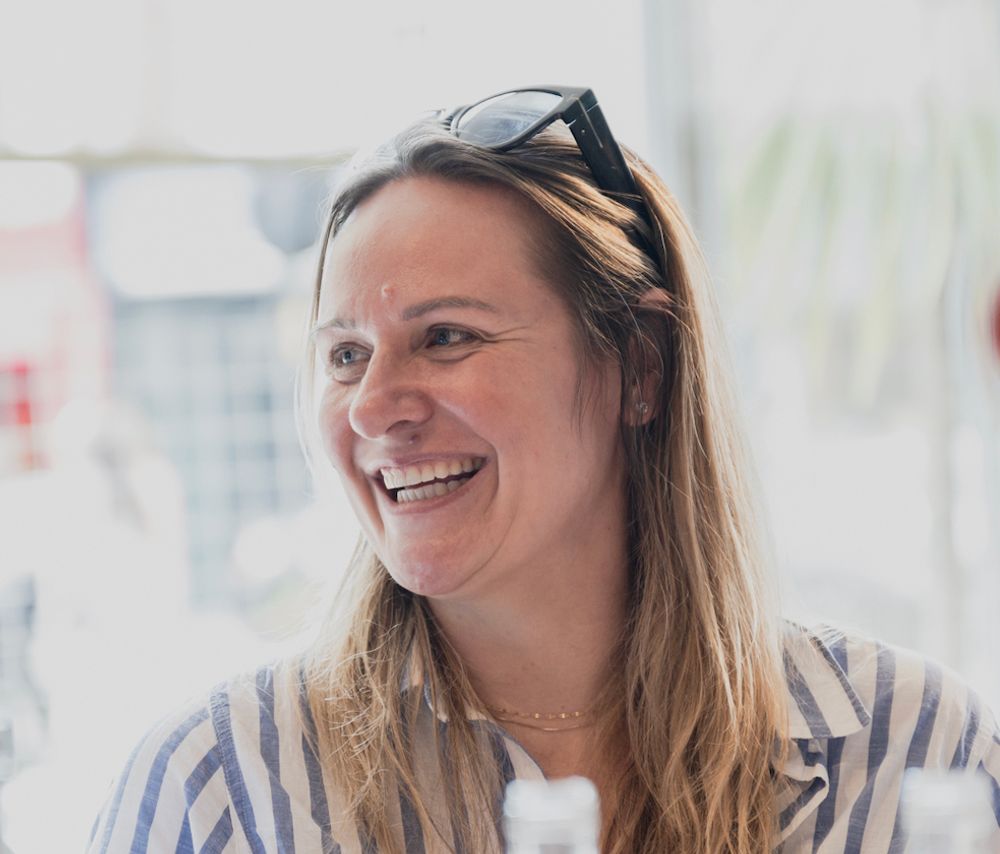
Erin Smith is a widely experienced marketing director, most recently heading up direct to consumer for Freixenet Copestick and managing director of its Slurp online retail business. She also helped build up the content and digital team at Majestic Wine and has a strong finance and journalism background as deputy editor of Harpers Wine & Spirit.
Introducing Provence Rosé wines
Provence is unique in the world of wine as it is the only major wine region globally to specialise in rosé - and it accounts for 90% of all wine made in the region. This specialisation is not only deep rooted in the region’s history, but also drives its producers and respective wine bodies on to constantly be innovating, challenging and looking at how it can continue to make the best and most respected rosé wines in the world, rightly claiming to have set the benchmark for the rest of the world to live up to.
There is now an increased focus on aged rosés with more estates keeping their wines back for three to five years and are vinifying and blending with ageing in mind.
Three main regions
The region is split into three appellations: Côtes de Provence; Coteaux d'Aix en Provence; and Coteaux Varois en Provence, each with their own unique terroir. Vins de Provence covers 200km from east to west, and 100km from north to south, from the foothills of the Alps to the Mediterranean coast.
AOC Côtes de Provence

The region’s largest appellation stretches from the sea up to mountainous hinterland. These diverse terroirs produce rosé wines with a balanced generosity and light, tangy freshness, ending in a persistent finish that is often suffused with abundant fruitiness. Their nose offers aromas of fresh flowers (rose), yellow fruits (melon, peach) and red fruits (strawberry, raspberry, cherry), coupled with touches of citrus zest, tropical fruits and marshmallow. Their palate exudes a supple, rounded feel, counterbalanced by a varying degree of crispness, depending on the vineyard site.
AOC Coteaux d’Aix-en-Provence
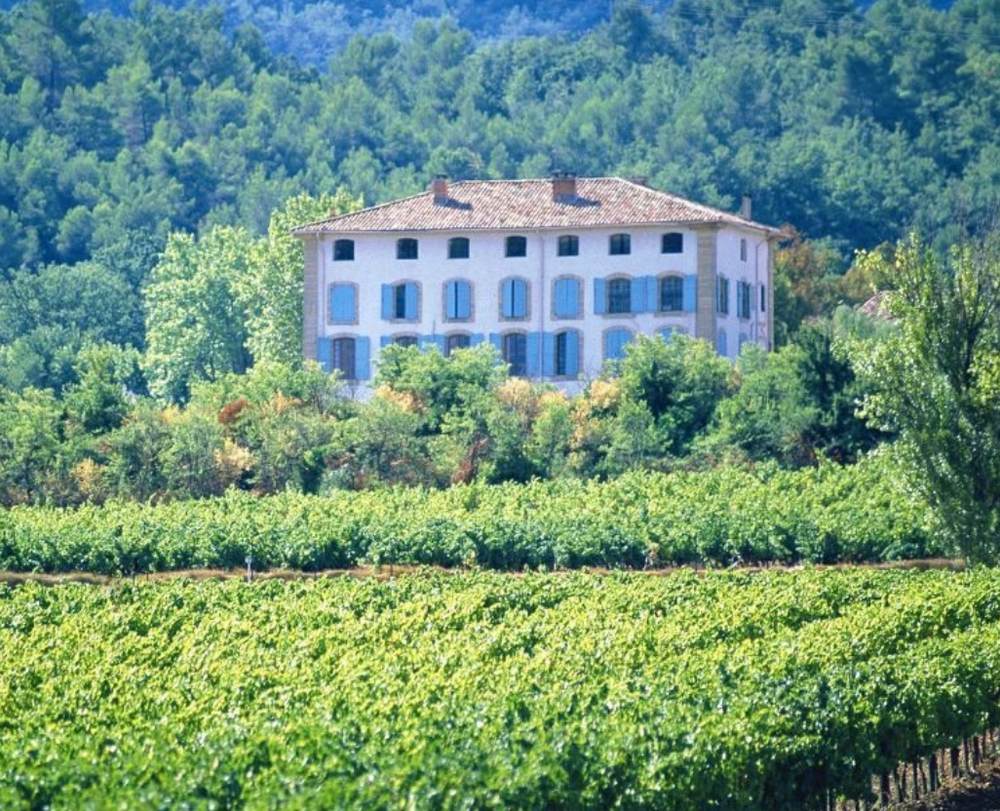
Bordered by the Rhône and Durance rivers, this appellation’s vines spring from lovely limestone soils. The rosés here are shimmering and vibrant with light colours of salmon- pink, peach and lychee and clean pink reflections. Their nose offers up floral and tangy red berry notes followed by intense aromas of citrus and yellow or white-fleshed fruits, occasionally lifted by some sweet spice and seasoning accents. Their palate is ample with a great acid backbone – the complex, fruity rosé wines revolve around an impression of volume and an acidic frame that makes them thirst-quenching and very palatable.
AOC Coteaux Varois en Provence
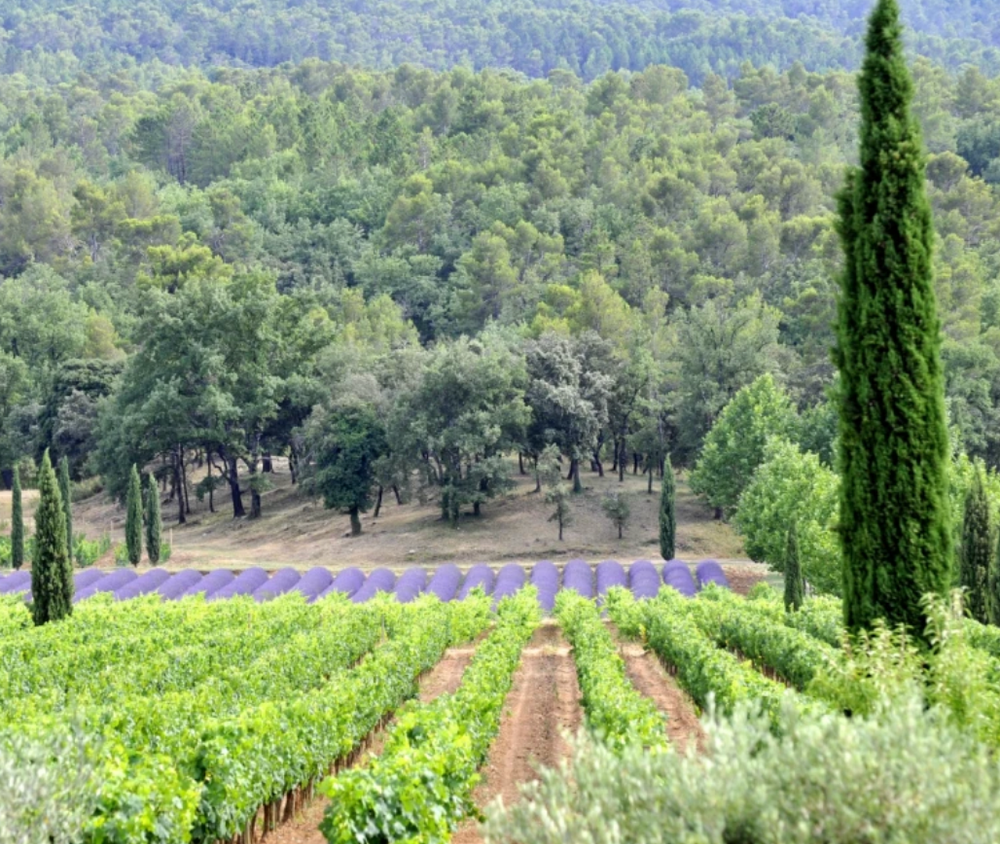
This appellation endures cold winters which give its rosés minerality and freshness. Beautiful pale pink in colour, ranging from salmon to very light pink, their nose is complex and expressive, displaying floral notes along with a very broad array of fruit aromatics – citrus, tropical fruits, sun-ripened fruits and fresh red fruits. Their palate is elegant and ample, yet also aromatic and persistent, and consistently shows great balance between roundness and freshness.
Here the endless sunshine, low rainfall and strong winds all combine to create a climate that offers exceptional conditions for growing vines and producing healthy, well-balanced grapes. Where a combination of night-time harvesting, continuous temperature control, vinification by direct pressing, cold skin maceration or the art of blending helps make consistent, high quality wines.
Collective spirit
Key to the region’s future success is the collective spirit that exists between the region’s 469 private cellars, 53 cooperatives, 37 négociants-vinificateurs, and 5,000 growers who have recognised the need to work together, collaborate and continue to make a style of wine for the rest of the world to follow.
All of this is harnessed through the work of the Centre du Rosé - a dedicated research and development centre that is 100% focused on understanding and improving the quality of Provence rosé. It is the only one of its kind in the world.
Exports - Provence rosé in facts and figures
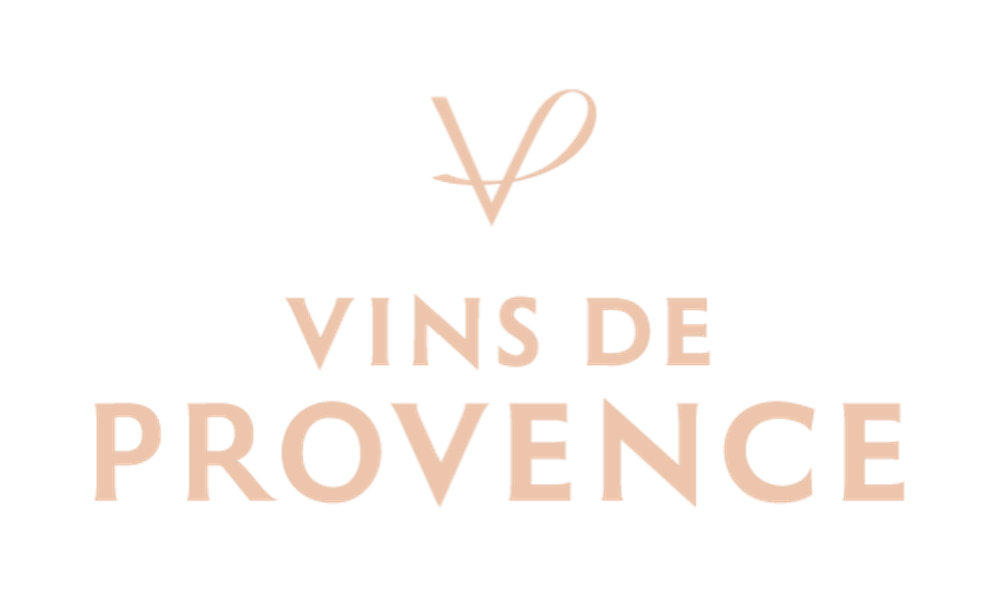
- The UK is Vins de Provence’s number two export market, with an average €5.60 export price accounting for 18.5% of its total exports by volume - around 10 million bottles.
- The UK has seen 23% annual growth in Provence rosé since 2013.
- The US is Provence’s number one export market with 20.8m bottles shipped in 2023 (38% of the total export volumes), and an average bottle price of €6.90.
- The Netherlands is third export market with almost 4m sold (7.3% of the total export volumes) and average €4.60 export price in 2023.
- Germany comes in fourth with just over 3m bottles in 2023 (5.8% of the total export volumes) and the best value of the three European markets.
- Belgium is fifth with 2m plus bottles and 4% total export volumes.
The Restaurant Tour: The Food and the Wine
In each restaurant the buyers had the opportunity to try a selection of wines that had been specifically chosen to complement the dishes from that restaurant.
Rabbit
The Wines
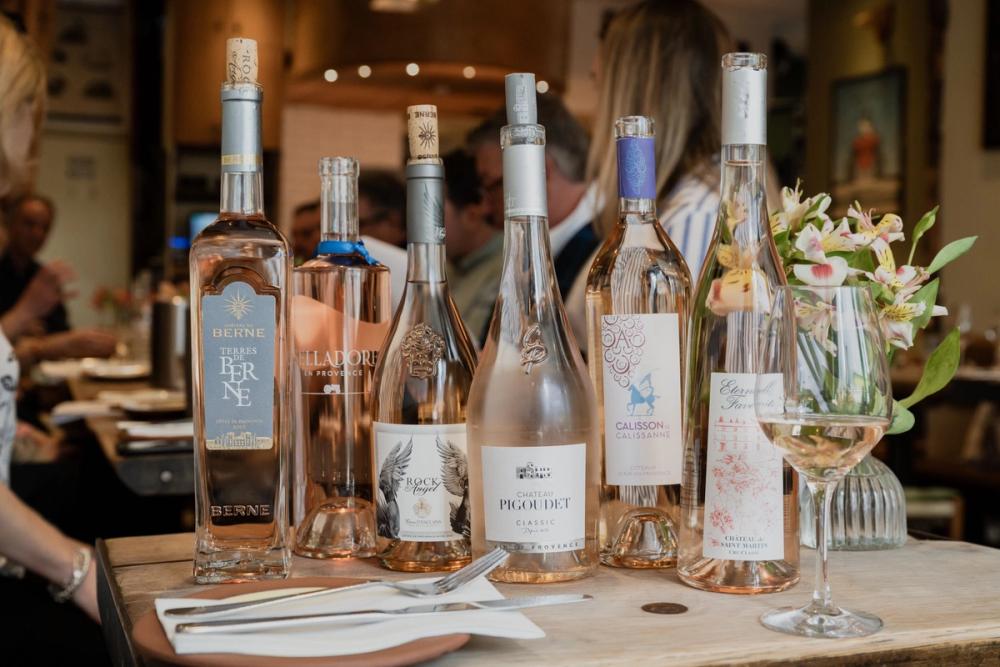
Château de St Martin, Grande Réserve Cru Classé, Côtes de Provence 2023. RRP £26.
Château d'Esclans, Rock Angel, Côtes de Provence. RRP £20.99.
MDCV, Terres de Berne, Côtes de Provence, 2023. RRP £16.
Château Pigoudet, Château Pigoudet Classic, Coteaux d'Aix-en-Provence 2023. RRP £20.
Domaine St Jean de Villecroze, Selladore, Coteaux Varois en Provence 2023. RRP £19.
Château Calissanne, Calisson de Calissane, Coteaux d'Aix-en-Provence 2023. RRP £10.
Dishes for pairing with the wines
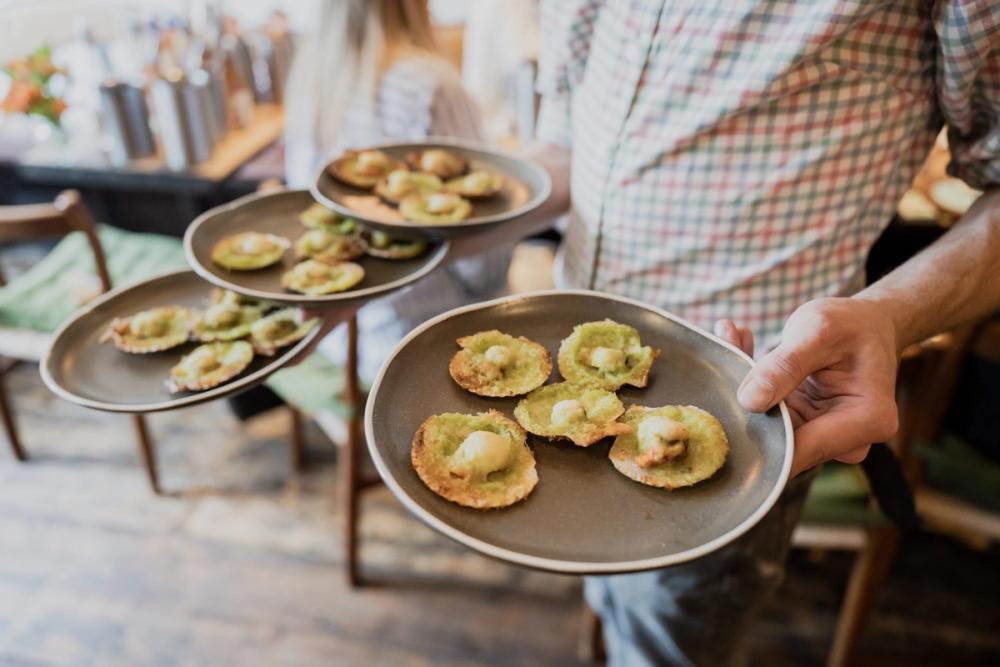
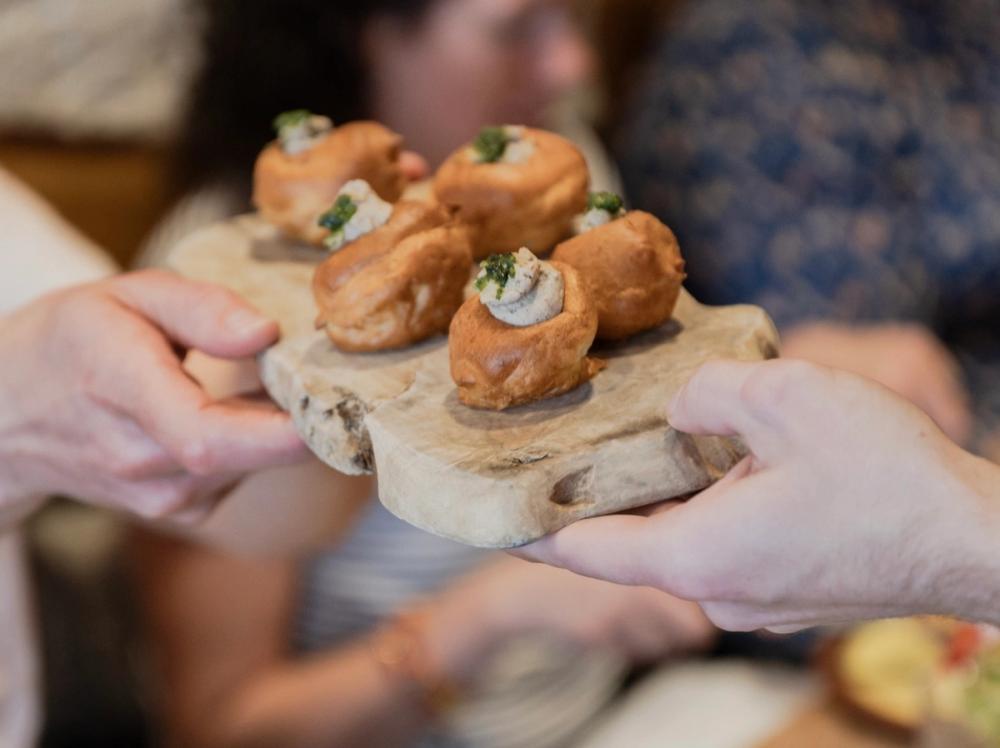
Trout Mousse cornetto
Somerset Goat’s Cheese Mousse Eclair, South Downs Honey
London Buratta, honey charred Radicchio, biodynamic pear vinaigrette
Grilled Asparagus, crispy duck egg, lemon sumac
Chicama
The Wines
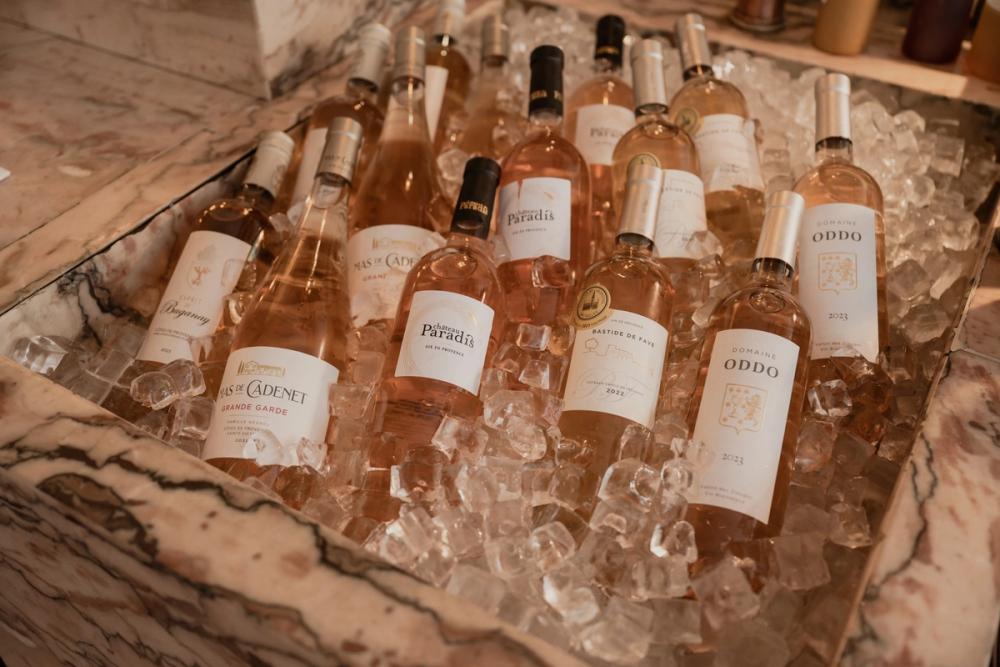
Minuty, Prestige, Côtes de Provence, 2023. RRP £24.95.
Mas de Cadenet, Grande Garde Rosé, Côtes de Provence Sainte Victoire, 2021. RRP £31.
Gilardi Le Vin Ensoleillé, Esprit de Buganay, Côtes de Provence 2023. RRP £9.99.
Château Paradis, Coteaux d'Aix-en-Provence, 2023. RRP £14.49.
Bastide de Fave, Coteaux Varois en Provence 2023. RRP £14.90.
Domaine ODDO Vallon des Glauges, Domaine Oddo, Coteaux d'Aix-en-Provence 2023. RRP €11.25.
Dishes paired with the food
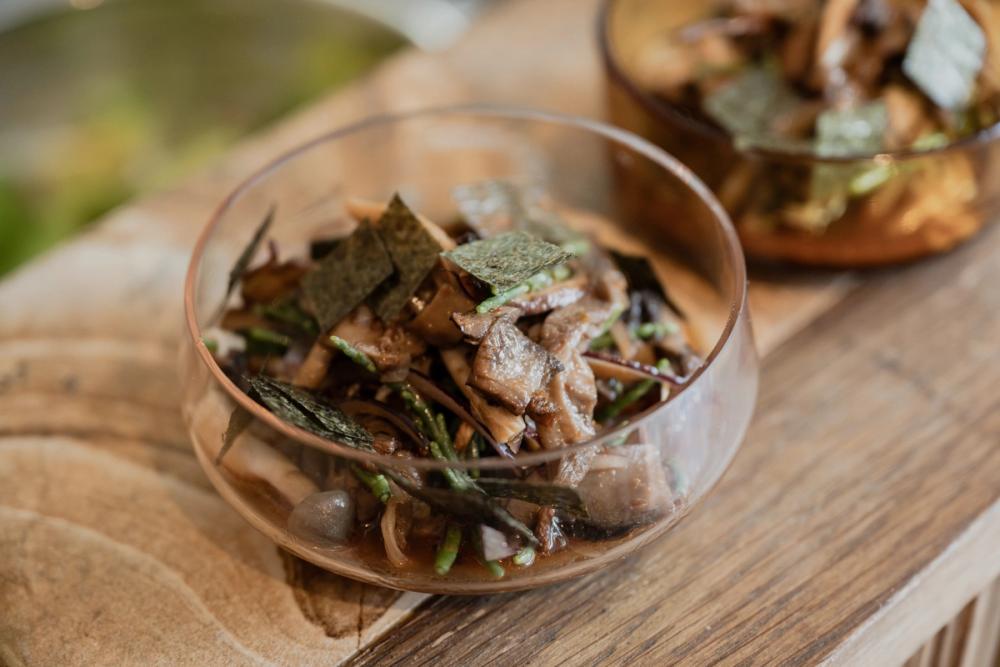

Grilled corn ribs
Grilled seafood platter - wild white prawns, octopus, scallops, soft shell crabs
Black ink squid
Otoro Limoise salad
HUŎ
The Wines
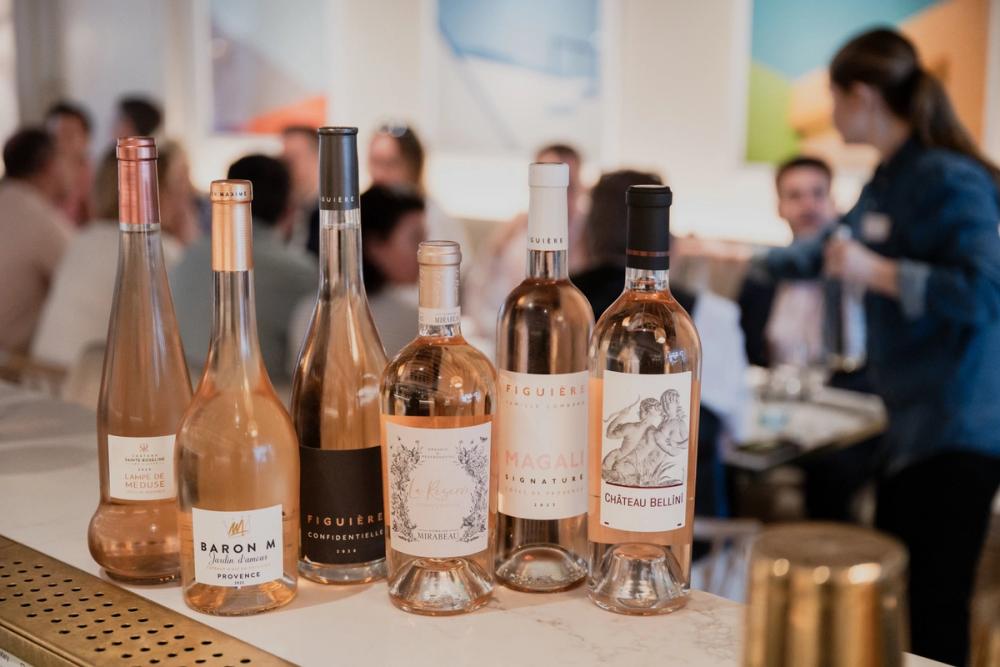
Château Sainte Roseline, Lampe de Méduse Cru Classé, Côtes de Provence 2023. RRP £19.
Maison Mirabeau, La Réserve, Côtes de Provence. RRP £25.90.
Figuière, Confidentielle, Côtes de Provence La Londe, 2022. RRP. £19.95.
Figuière, Magali,Côtes de Provence, 2023. RRP. £14.48.
Château Bellini, Coteaux Varois en Provence, 2023. RRP £19.45.
Wines Tree, Baron M Jardin d'Amour, Coteaux d'Aix-en-Provence. RRP £12.99.
Dishes paired with the food
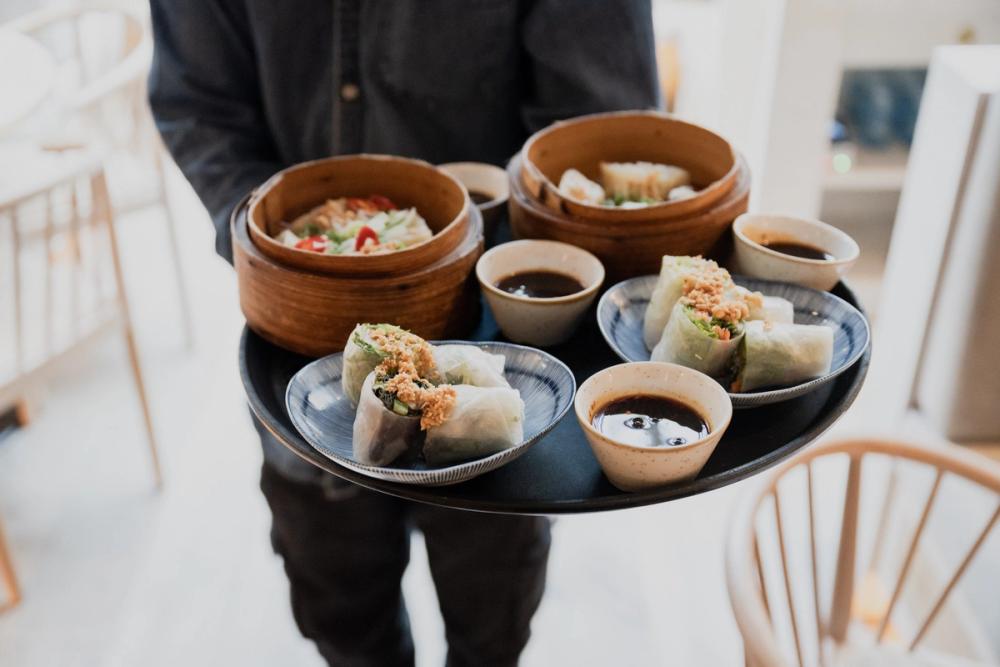
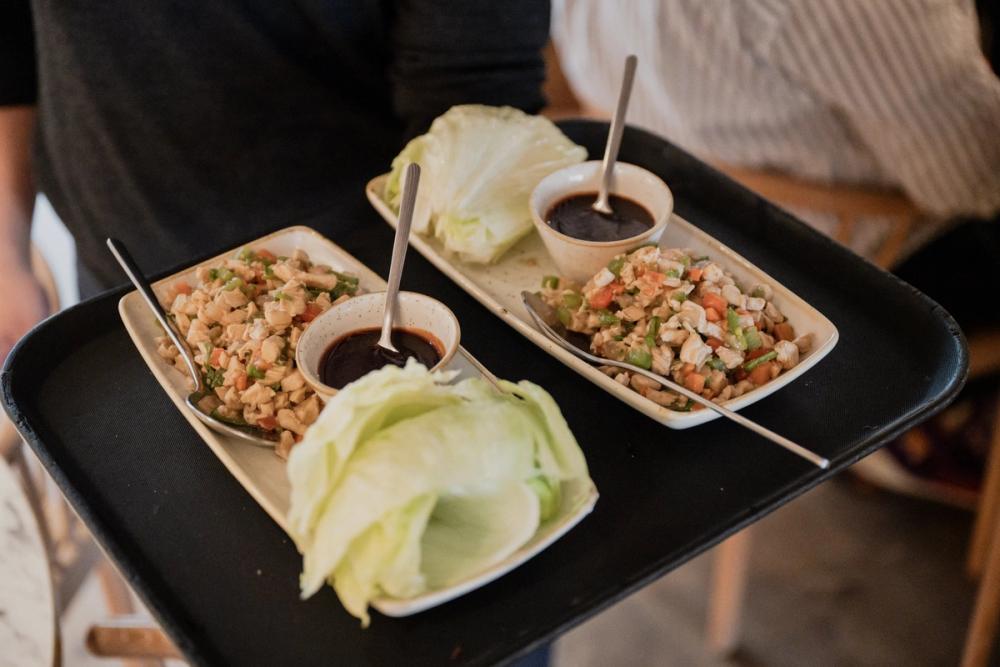
Chicken Lettuce Wraps
Duck Salad with watermelon and cashew nuts
Spicy Hunan pork dumplings
Miso Aubergine, noodle and cucumber salad
What the buyers’ had to say...
Ray O’Connor MW, wine consultant and UK ambassador for Vins de Provence, was able to take the group through an introduction and overview of the region, sharing his own personal insights into an area that was hugely important in his previous role as head wine buyer at Naked Wines and which he visited only a few weeks ago.
The first thing to appreciate is just how young the whole Provence rosé category as we know it is. “Whilst rosé wine has been made in Provence for two thousand years, its success is more recent,” said O’Connor, “for that was the time when the region’s winemakers really started to come together and think as one about how they could maximise and make the most of their unique climate and terroirs and the style of rosé they were able to make.”

Ray O'Connor was able to explain to the group the advances that have taken place in Provence in recent years to raise the quality and diversity of its wines
The spirit of togetherness, that came from the creation of the Centre du Rosé in 1999, heightened the winemakers’ efforts. The focal research helped shape, guide, and bring producers together to help them develop what we can now regard as the Provence rosé phenomenon. The research contributed to understanding the styles of rosé that could potentially be produced, the importance of having a breakthrough pale pink style, and what that might do to consumer demand. This has led to the premium Provence we now know.
This expertise it has built up over the years, and the research work it has done into its soils, terroir, vinification and winemaking techniques both in the vineyard and the cellar - particularly around pressing and managing flavour profiles through minimum extraction - are what has helped shape the industry as we know it today, explained O’Connor.
“It started in the cellar and then moved to the vineyard to see what could be done, with cover crops and canopy management and other vineyard techniques,” he added.
Thanks to the detailed knowledge of each individual vineyard, coupled with the work of the Centre du Rosé, which includes analysing wines from all over the world, the three main areas of production - the cooperatives, the family estates and negociants – were able to get on board with the vision that if they all followed the same techniques they could be the number one globally.
“And now they are,” he added. “Provence now owns the rosé wine category but it has taken a lot of hard work and investment and commitment. But I would pledge it will still be number one in 10 years’ time because of the continued work being done with its viticulture and in the cellar. Its ability to combine tradition with innovation, and, of course, its long-standing and incredible expertise when it comes to making rosé means that it is consistently moving forward. The region as a whole is making impressive strides to adapt to climate change - integrating regenerative farming for example; it is giving greater attention to exploring aged rosé, and, of course, always looking to improve on quality.”
Game changer
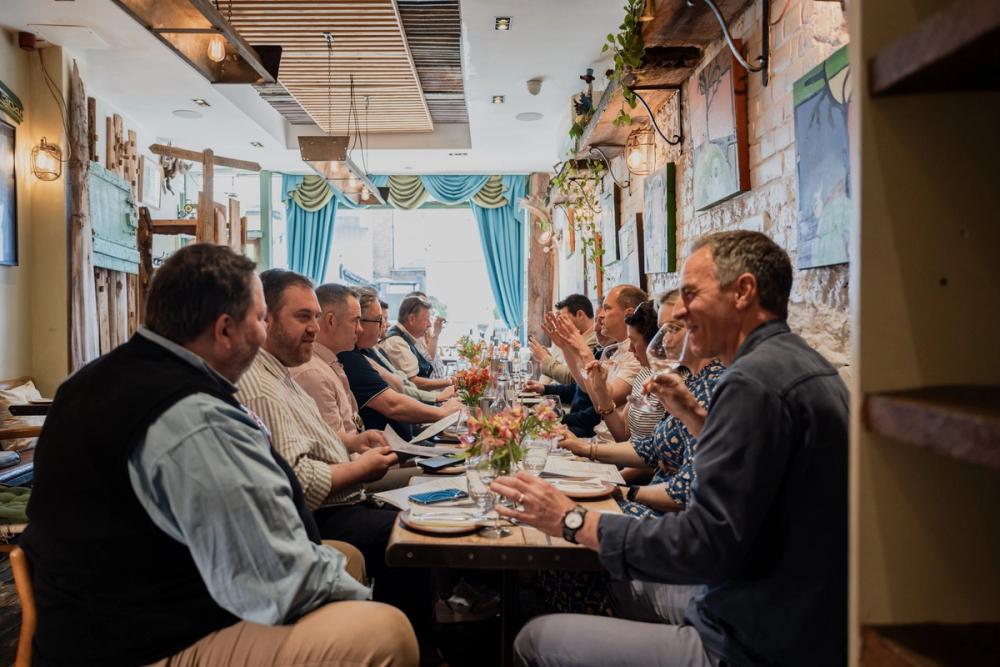
The group were able to share their first first impressions on Provence rosé wines at Rabbit, the first restaurant on the tour
“We have just seen the whole industry grow and grow,” said Joe Wadsack, who as judge, consultant and host of his own consumer YouTube wine show said he needs to be on top of the latest trends in Provence rosé as it now has such an influence on the rest of the sector in terms of the styles of wine, and that easy, approachable way it has created a category all of its own.
“It’s been a total game changer. It’s all about making wines with mouth feel and that sense of place that comes through in the wines,” he added. “It has become the house style for rosé around the world. We now have rosés you drink in the day and those you drink in the dark and those you drink in a nightclub.”
He also believes the approachability, and balance between texture and acidity resulting in an easy drinking style has been important.
Henry Boyes likens the impact Provence rosé has had to how Apple has become a global brand where incredibly strong brand marketing is able to back up incredible levels of research into technology and sophistication in the product.
He was able to share the experience MDCV UK has had in building up its business on the back of the success of Provence rosé and its four wineries, Berne, Château Saint-Roux, Château des Bertrands and Ultimate Provence, which cover all the different terroirs in the region. Together, said Boyes, they account for around half of the company’s overall business, with the rest coming from its five estates in England which include Kingscote and Silverhand, the biggest vineyard area in the country.
“We know the importance of making lifestyle rosés as well as gastronomic rosés,” he added, pointing to the Michelin starred restaurant on the Berne estate.
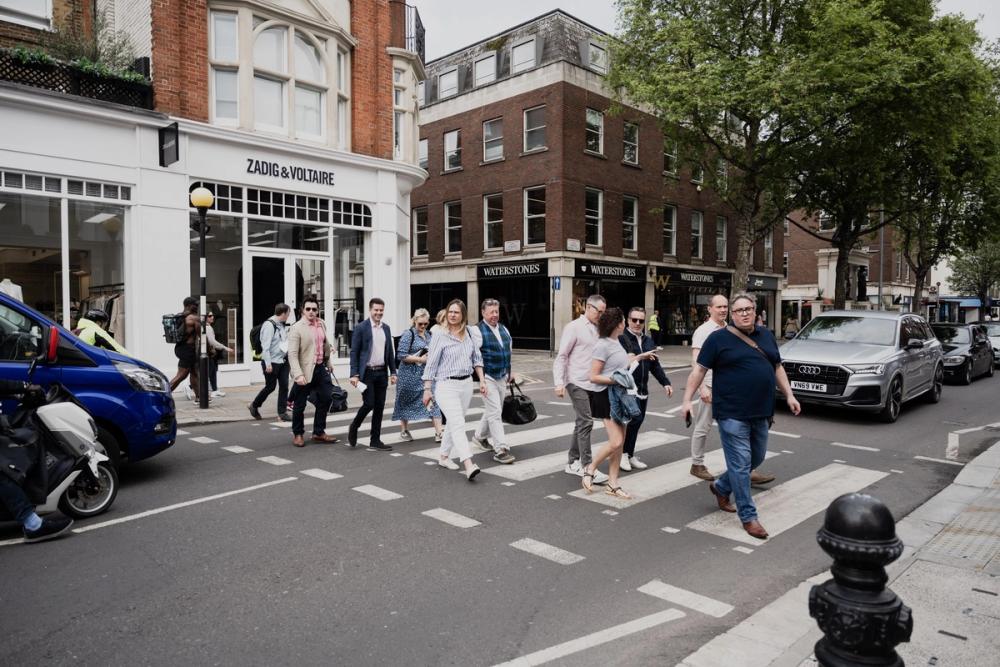
Following the tasting at Rabbit it was time to head to the second restaurant...
Juliet Doughty said Elystan Street, the one-star Michelin restaurant in Chelsea, London, currently has two Provence rosés on the list and she is always on the “look out for something a bit more unique” that can work as part of its tasting menus.
“I am really interested to explore more about what Provence rosé can do. Particularly gastronomic and food friendly rosés as I love pairing them with food. There is an opportunity for Provence rosé to be more complex, to know more about the different regions and what they bring to the wine.”
Abbie Bennington said she works a lot with Provence rosé hosting educational tastings and at corporate events. “There is always a lot of interest in Provence rosé at all the events I do,” she said.
Richard Leaver said Provence is not an area his consultancy and agency business has done a lot of work in recently, but he is keen to find out more and see what opportunities there might be for him.

Juliet Doughty and Ray O'Connor MW leading the way...
Dan Whine said rosé and Provence rosé “is a huge part of Zapp’s business” with up to 40 different rosés on its list, including its own label Provence rosé brand. “We are one of the largest retailers of Whispering Angel in London,” he added.
Ian Wharton says Scott’s of Richmond works a lot of with the major Provence rosé brands so he is a little restricted in what he can sell, so this was a great opportunity for him to taste across a wide number of styles across the region.
Luke Flunder who combines a wine consultancy business with a successful social media influencer role, and was one of the first to use Tik Tok to share advice around wine and create fun videos, said it is hard to go wrong with Provence rosé on social media as it has such a following.

All aboard the Provence Restaurant Tour bus...

The Buyer's Restaurant Tours are also a great opportunity for leading wine figures to network and meet their peers
Ben Jackson at Hallgarten & Novel Wines said it is a great accolade to the region that so many other parts of the world now want to “emulate” that Provence rosé has achieved, but no-one has really got close.
Roger Jones said he had success with Provence rosé at his Michelin-starred The Harrow at Little Bedwyn restaurant even though many of his core customers would not naturally buy it. But by putting the very best rosés on its tasting menus and by-the-glass he was able to introduce and “convert” a lot of them.
Erin Smith, who recently headed up e-commerce at Freixenet Copestick, said Provence rosé would sell all year round and keep going even after its boom in the summer. “People would also be happy to trade up at Christmas for more expensive Provence rosés. It’s no longer a seasonal choice.”

Is there much further to go?
Boyles believes the boom in Provence rosé sales is also good news for the rosé category as a whole as it is not taking market share from other areas, like California, but is more likely to see French red wine drinkers, for example, switch to rosé.
Buy with your eyes
Then there is the colour and the pale pink that has become the benchmark for rosés around the world. A colour that has the ability to inspire and transport you to more sunny climes.
“You can be sitting on a pub terrace in south London with bottle of Provence rosé in an ice bucket in front of you and you can be transported to the south of France,” he said.
Whine agreed: “Just seeing the bottle and tasting the wine has the ability to transport you from the Kings Road to Provence. There are some truly aspirational rosés in the market.”
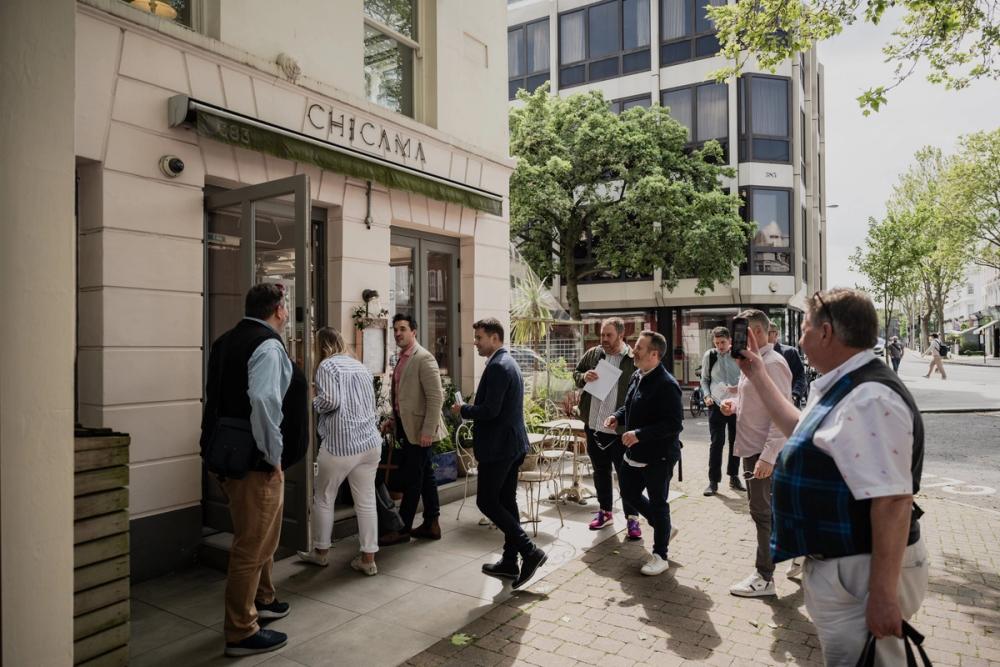
Arriving at Chicama for the second stop on the tour
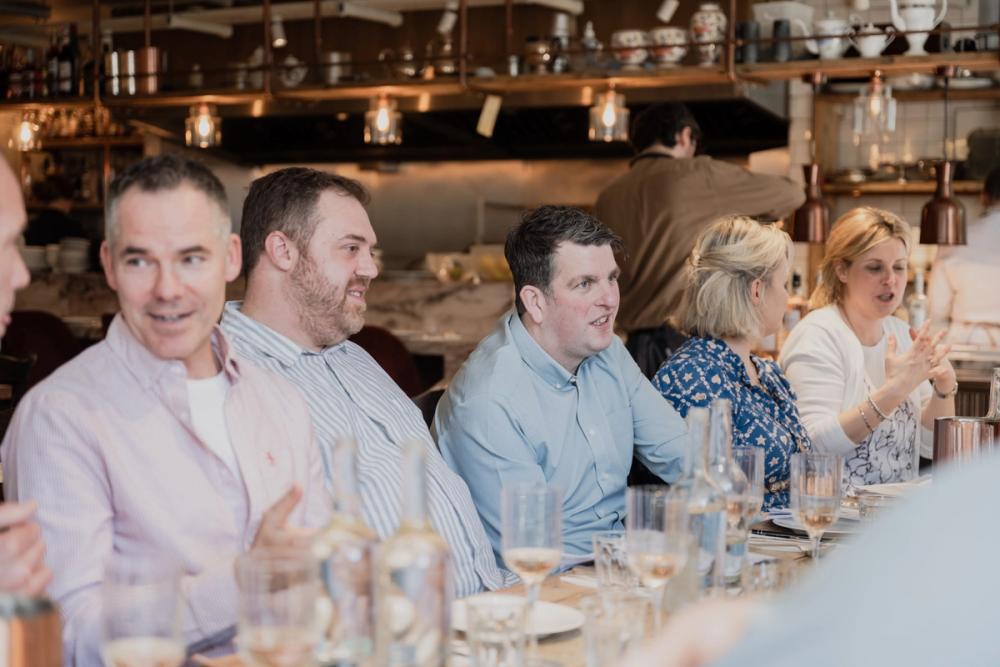
The group get down to discussing the second group of wines at Chicama
People buy with their eyes and just seeing a bottle of pale pink Provence rosé sitting on someone else’s table is incredibly attractive, said Doughty.
Wharton said as a sommelier it is so much easier to talk to customers about Provence rosé as they have either been there to experience it for themselves or can visualise it. That becomes far more difficult compared to talking about Sancerre and the Loire and other classic regions.
“Provence has put the flag in the ground when it comes to colour,” said Wadsack.
It also goes back to the vision of the Centre du Rosé, stressed O’Connor, the ability to get flavour, volume and colour from extraction.
“That was the aspiration and they have knocked it out of the park,” he added.
Smith believes Provence rosé is already well-placed to firmly position itself as a lifestyle brand in its own right. A platform on which it can then look to build more expensive rosés.
Boyes agreed and as an industry there can be a tendency to “look down on things that get traction with consumers”. “I just love how this is a category you can potentially have some fun with. It’s just so accessible.”
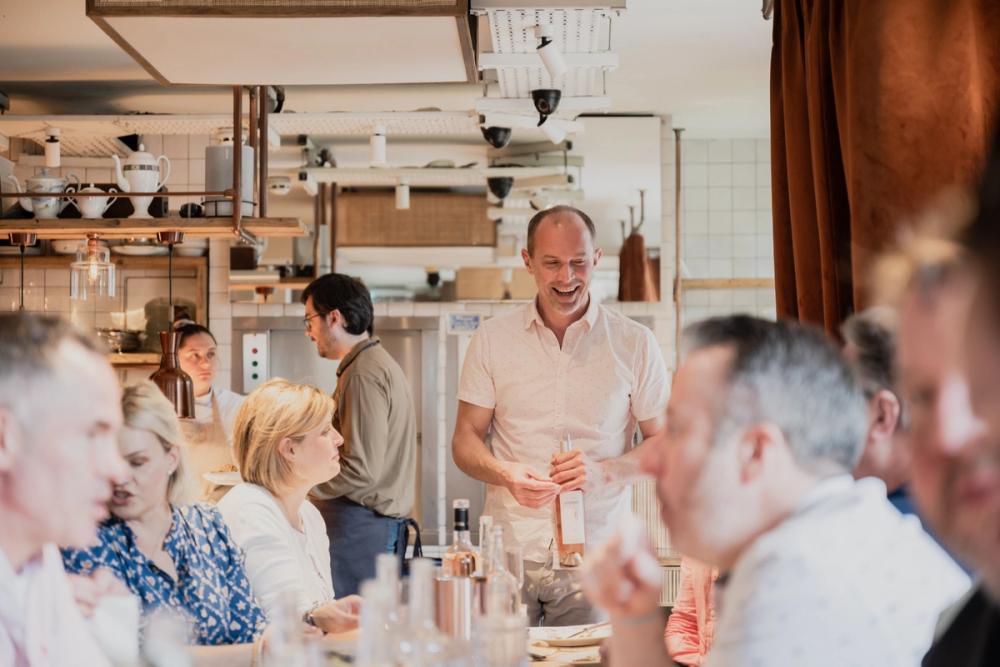
Ray O'Connor was able to share his personal insights into how far Provence rosé wines have developed in recent years
“It has a ready to go story to tell,” added Wadsack. “Everything makes it so easy. It has succeeded in making wine that a lot of people don’t think twice about spending £30 a bottle on. You don’t get that in the rest of France.”
Which is why it needs to “keep evolving and expanding” and “does not take the eye of the prize,” added Jackson.
Big on sustainability
Sustainability, like so much of the world, has a big role to play in Provence and many of its producers have been leading players in regenerative farming with organic and biodynamic winemaking widespread in the region - 57% of the vineyard’s surface is either organic and/or HVE.
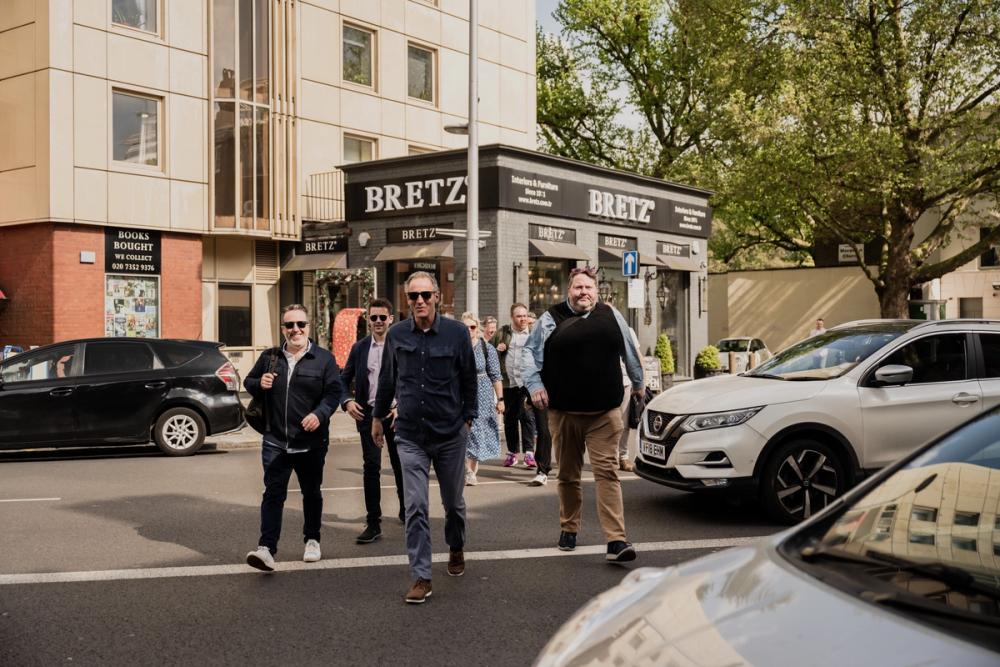
The group crossing the Kings Road and heading to the third stop...
O’Connor said the focus is now very much on creating a healthy polyculture where vineyards, forests, hedgerows and the whole agri-environment are all working together to create a strong biodiversity that helps the population of insects, birds, bees, bats etc.
Climate change is also having a big impact on the area and is again a major feature of the work being done by the Centre du Rosé, particularly around analysing which climate resistant grape varieties might be suited for future planting in the region and the role of grafting and what impact they might have, said O’Connor.
Food pairing
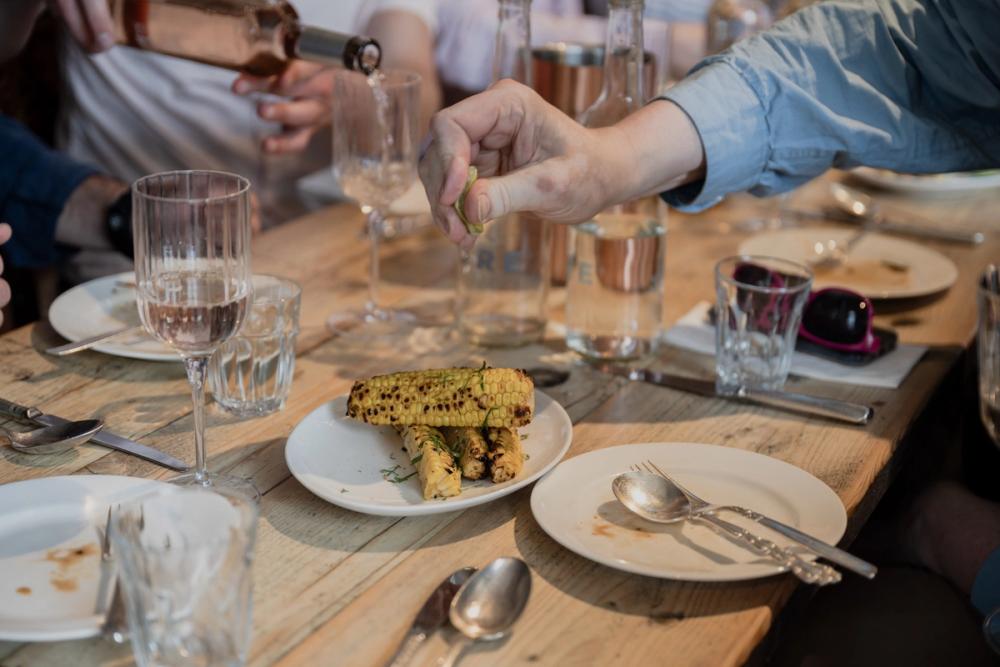
The Restaurant Tour allowed the panel to taste Provence rosé wines against styles of food you would not normally associate with rosé
The panel was impressed by how well and easily most of the Provence rosés performed against the different styles of food on the day. Roger Jones was particularly taken by the pairings at Chicama, the Peruvian restaurant, and was seen heading into the kitchen to learn more about the seaweed the chef had used as part of its seafood platter.
“That’s what makes it stand. It’s ability to pair with different styles of food. That’s why the Brits have got behind it as well. As it is so versatile,” says Whine. “It’s a sommelier’s dream.”
Doughty said most of the wines they taste stood up really well against the food and the various dishes and was particularly impressed by the pairings at Chicama.
“The pairings and wines showed how good rosé can get. The higher priced rosés all justified their prices,” added Wharton.
All shapes and sizes
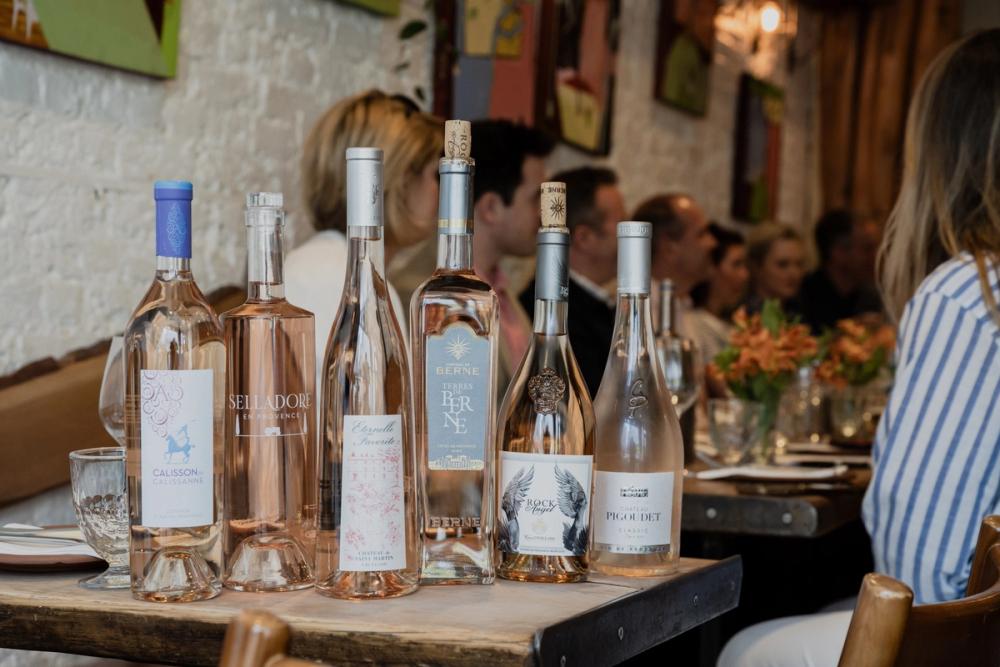
All shapes bright and beautiful are what have helped Provence rosé stand out on shelf and on restaurant tables
Another stand out factor for Provence rosé is the widespread use of multi-size and multi-shaped bottles that truly makes its wines stand out on shelf, or on a restaurant table.
Boyles believes it has been a key reason for its success: “It’s a big focus for us in order to push Provence rosé all year round.”
It was a similar objective during his time at Mitchells & Butler: “The different bottle shapes were important in enticing people into the Provence rosé category. Nobody does it better than Provence.”
Whine agreed: “No other region in the world has the diversity and variety of bottle shapes.”
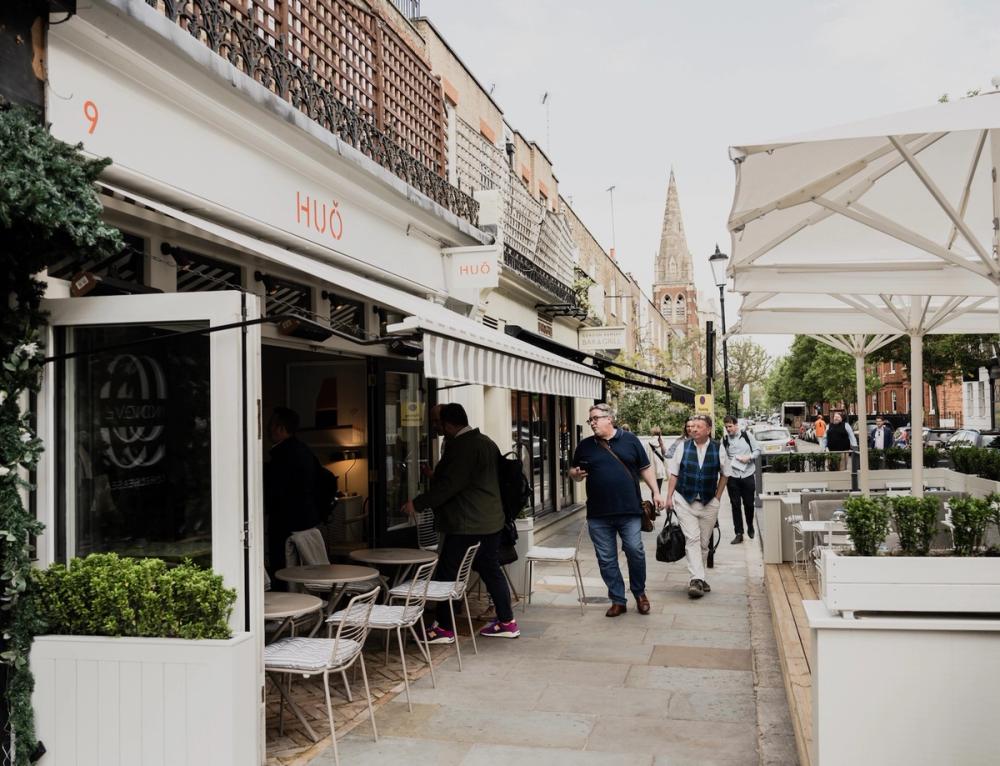
Anyone fancy some Chinese food? Arriving at HUŎ
The different shaped large formats have also had a big impact on its Provence rosé sales at Zapp as it taps into its customer base wanting something fresh, exciting and new, with endless jeroboams of Provence rosé going out to its customers.
It has also seen an increase in the return of cork and Diam and particularly the closures that can control oxygen transmission, said O’Connor. Again thanks to the research and analysis of the right type of closure for its wines by the Centre du Rosé.
Leaver had one word of caution that it continues to make and use bottles that are right for the overall premium image of Provence and that they don’t become “too frivolous or outlandish”. Or “spend more on the bottle than the wine,” added Jones. “If it helps the wine then do it, but if not then don’t play around with it.”
They also need to make sure the bottles can sit in the standard restaurant and bar fridges, stressed Doughty.
* Thanks to Vins de Provence for the support in hosting the Rosé Restaurant Tour. You can find out more about Provence wines at Vins de Provence website here.
* In parts 2 and 3 of our Rosé Restaurant Tour to be published later this week you can read the personal feedback from each of our "tourists" who took part in the event.

